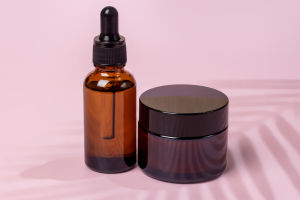Glass, this colorless and transparent material, has been a part of human life for thousands of years.
Initially, glass was primarily used for decorative purposes, but with advancements in technology, people gradually realized that glass was much more than just a decorative material.
It now plays an irreplaceable role in modern society, covering a wide range of fields including architecture, electronics, medicine, and art. Today, we will explore the multifunctional uses of glass and how it plays an essential role in our daily lives.
Firstly, glass is most commonly used as a building material. Whether it’s the glass curtain walls of skyscrapers or the windows in homes, glass’s unique transparency allows buildings to receive ample natural light. The introduction of glass windows has made living spaces brighter and more transparent, while also effectively blocking out external noise and pollution.
In modern architecture, glass is also often used to create a sleek, contemporary appearance, enhancing the aesthetic value of buildings. In addition, with the increasing emphasis on energy efficiency and environmental protection, the advent of energy-efficient and smart glass has brought new vitality to the construction industry.
Smart glass can automatically adjust its transparency according to the intensity of external light, effectively regulating indoor temperature and reducing energy consumption.
Secondly, the use of glass in electronic products is becoming increasingly widespread. From smartphone screens and TV displays to touchscreens and laptops, glass is nearly everywhere. The touchscreens of smartphones are typically made of strengthened glass, which is processed through special techniques to enhance its resistance to pressure and impact, ensuring the durability of the device and an optimal user experience.
At the same time, with the development of transparent OLED technology, glass not only serves as a supporting material but can also be directly used in the manufacturing of displays, improving clarity and visual immersion. The importance of glass in electronic products is undeniable, as it not only protects screens from damage but also offers greater possibilities in terms of aesthetics and functionality.
Moreover, the use of glass in the medical industry is also significant. In medical equipment, glass is widely used to make syringes, test tubes, petri dishes, and microscope lenses. Due to its smooth surface and resistance to chemical reactions, glass exhibits excellent biocompatibility, making it a common material in pharmaceutical production and experiments.
In particular, in the pharmaceutical industry, glass bottles have been used for medicine packaging for hundreds of years, effectively preventing medicine from being exposed to moisture or contamination and extending their shelf life. With advancements in medical technology, many medical devices now also use glass components such as sensors and lenses to improve diagnostic accuracy and effectiveness.
In addition to its applications in construction, electronics, and medicine, glass is also widely used in art, decoration, and transportation. Glass art, with its unique luster and texture, has attracted the attention of countless artists.
Various glass products, such as glass sculptures, stained glass windows, and glass light fixtures, not only showcase the aesthetic value of glass but also maximize its functionality. In transportation, glass is not only used in car windows and lights but is also widely applied in aircraft and trains for windshields and windows, ensuring clear visibility and safety for drivers.
As technology continues to evolve, the applications of glass are constantly expanding. For instance, in recent years, the advent of ultra-thin glass and optical glass has made glass more prevalent in optical instruments and precision devices. Glass fibers, as an important composite material, are widely used in industries such as automotive, shipbuilding, and aerospace, thanks to their lightweight and high-strength properties, making them an ideal material.
In conclusion, glass is a multifunctional material whose applications have permeated various aspects of our lives. With ongoing technological innovations, the future potential of glass applications will continue to expand, and it will undoubtedly continue to influence our lives in the years to come.


